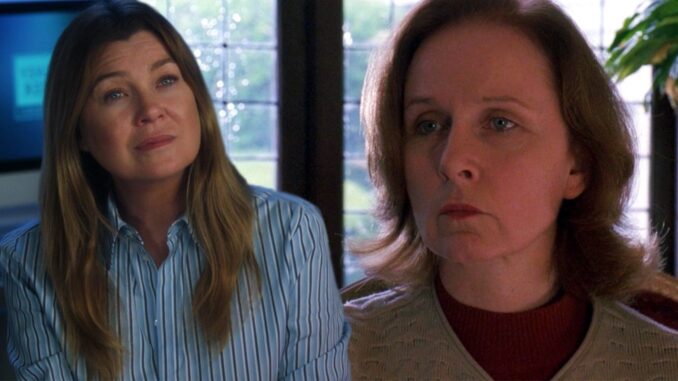
What Really Happened to the Woman in Grey’s Anatomy
The question, "What really happened to the woman in Grey's Anatomy?" doesn't seek a singular plot point for a specific character. Instead, it invites us to peer beyond the weekly medical dramas and personal entanglements, to discern the profound, cumulative impact of a life lived within the unforgiving, yet strangely nurturing, walls of Seattle Grace Mercy West. "The woman" in this context is not Meredith, Cristina, Izzie, or Bailey exclusively, but a composite, an archetype forged in the crucible of emergency rooms, operating theatres, and the relentless pursuit of medical miracles. What really happened to her was not a single event, but a continuous, soul-altering transformation.
First and foremost, what happened to the woman in Grey's Anatomy was a baptism by fire, repeatedly. She was plunged into a world where life and death were daily colleagues, where the fragility of human existence was etched into every furrowed brow and every frantic code blue. She survived not just one, but a litany of cataclysmic events that would shatter any ordinary individual: a hospital shooting, a plane crash in the wilderness, a bomb in a body cavity, a ferry boat accident, a car crash, a superstorm, even a physical assault by a patient. These weren't isolated incidents; they were rites of passage, each leaving an indelible scar, a deeper groove of trauma that, paradoxically, strengthened her resolve. What really happened was that she learned to breathe through fear, to make life-or-death decisions with a trembling hand but an unyielding mind. Her nervous system was rewired for perpetual high alert, and her capacity for resilience became boundless, born from sheer necessity.
Secondly, she experienced a radical redefinition of family and love. The woman in Grey's Anatomy found her "people" not through traditional bloodlines, but through shared trauma, intellectual camaraderie, and the unique bond of saving lives together. Her friendships became fiercely loyal, an interwoven safety net against the chaos of her professional and personal worlds. Love, for her, was never simple or straightforward. It was often born in the heat of a crisis, complicated by professional hierarchies, torn by ambition, or tragically snatched away. She loved deeply, passionately, and imperfectly, often losing those she cherished most — a partner, a sibling, a cherished mentor. What really happened was that her heart was perpetually exposed, alternately breaking and expanding, learning that love, like medicine, was a messy, unpredictable, and ultimately vital endeavor. She learned that even after devastating loss, the capacity to love again, to open oneself to vulnerability, was the truest form of survival.
Furthermore, what really happened to her was an unflinching confrontation with her own ambition and the sacrifices it demanded. This woman wasn't just a doctor; she was a surgeon, driven by an insatiable hunger for knowledge, innovation, and the mastery of her craft. Her career wasn't merely a job; it was an identity, a calling that demanded her every waking moment, often eclipsing personal relationships, motherhood, and even her own well-being. She pushed boundaries, challenged norms, and fought for recognition in a demanding, male-dominated field. What really happened was that she learned the true cost of greatness: the missed holidays, the strained relationships, the emotional exhaustion, the constant pressure to be exceptional. Yet, she also discovered the profound satisfaction of saving a life, of pushing the boundaries of medical science, of proving her worth not just to others, but to herself. Her pursuit of excellence became a relentless, self-defining journey.
Finally, what really happened to the woman in Grey's Anatomy was a profound, quiet, and often unseen transformation of her soul. Beneath the scrubs and the surgical masks, she became a walking testament to human endurance. She learned to compartmentalize unspeakable horrors, to grieve privately, and to find solace in the fleeting victories of the operating room. She became an empathetic healer, hardened by experience yet softened by shared humanity. She wrestled with her past, confronted her demons, and ultimately, found a way to carry her heavy burdens with a quiet grace. What really happened was that she stopped waiting for the other shoe to drop and started living in the uncomfortable space between trauma and triumph. She evolved into someone who understood the preciousness of every heartbeat, the fleeting nature of joy, and the indomitable power of the human spirit to heal, to adapt, and to persist, no matter how many times the world tried to break her.
The woman in Grey's Anatomy wasn't just a character; she was a mirror reflecting the messy, magnificent journey of living through extraordinary circumstances. What really happened to her was everything. She was burned and refined, loved and lost, challenged and triumphant. She became an enduring symbol of resilience, a testament to the fact that even in the most sterile and intense environments, the human heart remains gloriously, painfully, and undeniably alive.
